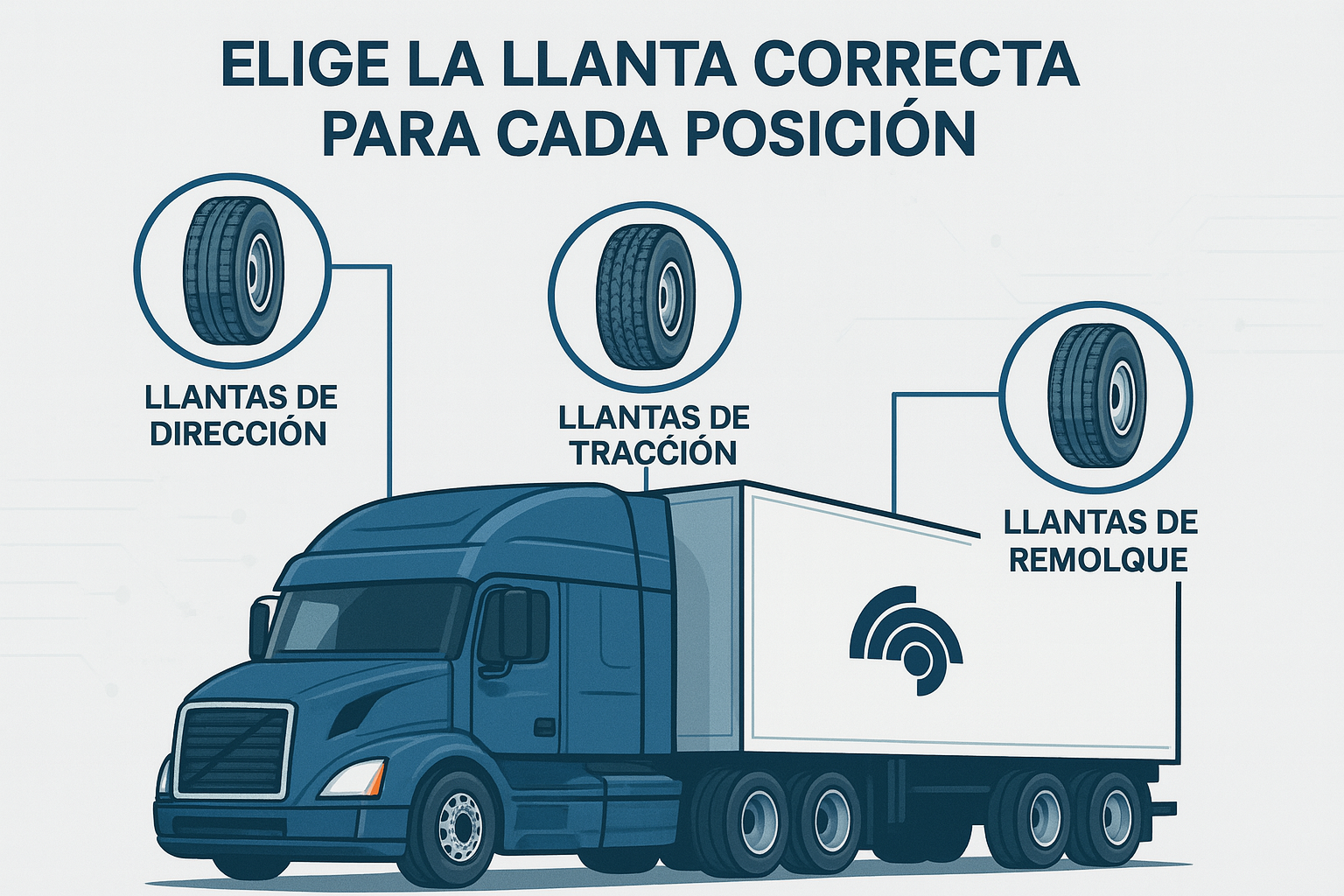In the transportation industry, every decision matters. From the route you choose to the type of tire you install on each axle, everything impacts performance, safety, and operating costs. And while tires may seem “all the same,” the truth is they’re not—especially when it comes to their position on the truck.
Types of Tires According to Their Position
A typical freight truck uses three types of tires, each designed with a specific purpose:
1. Steer Tires (Front Axle)
- Main Function: To steer the vehicle with precision.
- Features: Tread pattern designed to channel water, prevent irregular wear, and provide maximum lateral traction.
- Common Mistakes: Using drive tires on this axle can compromise steering control and cause premature wear.
2. Drive Tires (Drive Axle)
- Main Function: To transmit engine power to the road.
- Features: Deeper tread, aggressive pattern, and higher-grip compound.
- Common Mistakes: Installing them on the steer axle or trailer can increase fuel consumption without providing any real benefit.
3. Trailer Tires (Passive or Tag Axle)
- Main Function: To support the load and withstand wear from braking and drag.
- Features: Abrasion-resistant compounds, symmetrical design for flexible rotation, and maximum durability.
- Common MistakesUsing them as drive tires reduces their lifespan and compromises performance in wet or challenging conditions.
Why Is Proper Tire Positioning So Important?
- Safety: A poor tire combination can affect braking, traction, or even cause loss of control.
- Fuel Efficiency: Fuel consumption can increase by up to 10% if the wrong tires are used on the drive or steer axle.
- Lifespan: Improperly positioned tires wear out faster and unevenly, increasing the operational cost of every kilometer traveled.
- Predictive MaintenanceWith proper telemetry, it’s possible to measure temperature, pressure, and wear—optimizing rotation and replacement based on position and real operating conditions.
What if you made your choices based on real data?
Today’s technology makes it possible to analyze the behavior of each tire based on route, load, weather, and speed. At Quinta, we help fleets choose the right tire for each position using real telemetry data, achieving:
- Up to 15% annual savings in tire consumption.
- Reduction in on-road failure events.
- Greater accuracy in the fleet’s operational budget.
Conclusion
Not all tires are the same—especially when it comes to their position on the truck. Choosing the right type and placing it strategically can be the difference between an efficient operation and one full of financial leaks.
If you want to know which tire is right for you based on your routes, loads, and real-world conditions—let’s talk! At Quinta, we work with data, not assumptions.

